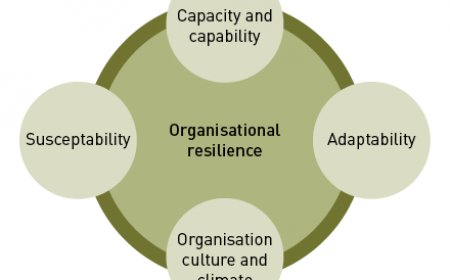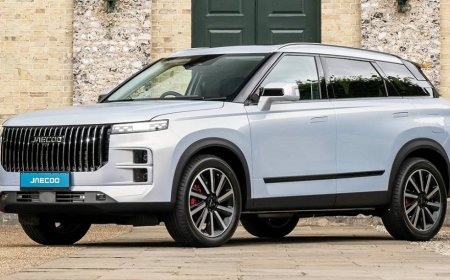Australia Top Tips for Vehicle Maintenance in 2025
Discover top tips for vehicle maintenance in Australia in 2025. Learn how to care for tires, fluids, brakes, and batteries, and adapt to electric vehicles and smart tools for a safer, more efficient driving experience.

In the vast and diverse landscapes of Australia, where road trips through rugged outback terrains, coastal highways, and urban streets are a way of life, maintaining your vehicle is not just a recommendation—it’s a necessity. The unique environmental conditions, from scorching summer heat to unpredictable weather patterns, place significant demands on vehicles, making regular maintenance critical for safety, reliability, and longevity. As we approach 2025, advancements in automotive technology, evolving environmental regulations, and changing driving habits necessitate a proactive approach to vehicle care.
For Australians, whether commuting daily in bustling cities like Sydney and Melbourne or embarking on long-distance journeys across remote areas, understanding the importance of vehicle maintenance is paramount. Neglecting routine checks can lead to costly repairs, reduced fuel efficiency, and even dangerous breakdowns, particularly in isolated regions where assistance may be hours away. Moreover, with electric vehicles (EVs) and hybrid models becoming increasingly popular, drivers must adapt their maintenance routines to accommodate these newer technologies.
This guide provides comprehensive tips tailored to the Australian context, addressing both traditional combustion-engine vehicles and emerging EV trends. By adopting these practices, drivers can ensure their vehicles remain in optimal condition, enhance safety, and contribute to environmental sustainability. From tire care and fluid checks to leveraging digital tools for diagnostics, these strategies will empower you to navigate the roads of 2025 with confidence and peace of mind.
Regular Servicing: The Foundation of Vehicle Longevity
Regular servicing is the cornerstone of effective vehicle maintenance, ensuring that all components function optimally and potential issues are identified before they escalate into costly repairs. In Australia’s demanding driving conditions—characterized by extreme temperatures, dusty environments, and long distances—adhering to a structured servicing schedule is essential for preserving your vehicle’s performance and extending its lifespan.
Understanding Manufacturer Recommendations
Every vehicle comes with a manufacturer-recommended servicing schedule, typically outlined in the owner’s manual. These guidelines specify intervals for inspections, oil changes, filter replacements, and other critical tasks based on mileage or time elapsed. For example, most manufacturers recommend an oil change every 10,000 to 15,000 kilometers or annually, whichever comes first. Ignoring these recommendations can void warranties and compromise engine health, particularly in high-temperature climates like those found in northern Australia.
In addition to standard services, consider seasonal adjustments. During summer, when temperatures soar, cooling systems and air conditioning units require extra attention. Conversely, winter months demand checks on battery performance and antifreeze levels, especially in southern states prone to colder weather. Tailoring your servicing routine to align with regional conditions ensures your vehicle remains resilient year-round.
Choosing the Right Service Provider
Selecting a qualified and reputable service provider is crucial for maintaining your vehicle’s integrity. Authorized dealerships offer specialized knowledge and access to genuine parts but often come at a premium cost. Independent mechanics, on the other hand, may provide more competitive pricing while delivering quality service. Regardless of your choice, verify certifications, read customer reviews, and inquire about warranties on parts and labor.
For those driving newer models equipped with advanced technologies, such as adaptive cruise control or lane-keeping assistance, opting for technicians trained in modern diagnostics is advisable. Many workshops now utilize cutting-edge diagnostic tools capable of interfacing with onboard computer systems, enabling precise identification of faults and efficient repairs.
Preventative Maintenance Beyond Scheduled Services
While adhering to scheduled servicing is vital, incorporating preventative measures between appointments further enhances vehicle longevity. Regularly inspecting key components—such as brakes, suspension, and exhaust systems—can preempt failures and improve safety. For instance, worn brake pads not only compromise stopping power but also increase wear on rotors, leading to expensive replacements if neglected.
Fluid checks are another integral aspect of preventative care. Engine oil, coolant, transmission fluid, brake fluid, and windshield washer fluid should be monitored routinely. Low or contaminated fluids can cause overheating, corrosion, or impaired braking, jeopardizing both vehicle performance and driver safety. Investing in high-quality fluids suited to Australian conditions, such as synthetic oils designed for extreme heat, adds an extra layer of protection.
Leveraging Digital Tools for Enhanced Monitoring
Advancements in automotive technology have introduced innovative ways to track vehicle health. Many modern cars are equipped with onboard diagnostic systems that alert drivers to potential issues via dashboard warning lights. Smartphone apps and Bluetooth-enabled devices allow real-time monitoring of metrics like tire pressure, engine temperature, and fuel consumption, empowering drivers to address anomalies promptly.
For EV owners, digital tools play an even greater role. Battery management systems provide insights into charging habits, range optimization, and overall battery health. Regular software updates, often delivered over-the-air, ensure that your vehicle operates with the latest features and security enhancements. Embracing these technologies streamlines maintenance efforts and fosters a proactive approach to vehicle care.
By prioritizing regular servicing, choosing reliable providers, implementing preventative measures, and leveraging digital innovations, Australians can safeguard their vehicles against the rigors of local driving conditions. This holistic strategy not only maximizes vehicle longevity but also ensures peace of mind on every journey.
Tire Care: Ensuring Safety and Performance on Australian Roads
Tires are the critical interface between your vehicle and the road, playing a pivotal role in safety, handling, and fuel efficiency. In Australia’s varied driving environments—from smooth city streets to rugged outback tracks—proper tire care is essential for maintaining optimal performance and avoiding hazards. As we move into 2025, advancements in tire technology and increased awareness of environmental impact underscore the importance of adopting best practices for tire maintenance.
Regular Tire Pressure Checks
Maintaining correct tire pressure is one of the simplest yet most impactful aspects of tire care. Under-inflated tires reduce fuel efficiency, increase wear on the edges, and compromise handling, particularly during emergency maneuvers. Conversely, over-inflation leads to uneven tread wear and diminished grip, posing risks on wet or uneven surfaces.
In Australia, where temperatures can fluctuate dramatically, it’s crucial to check tire pressure monthly and before long trips. Use a reliable tire pressure gauge to measure PSI (pounds per square inch), ensuring it aligns with the manufacturer’s specifications listed in the vehicle’s owner manual or on the driver’s side door jamb. Remember that pressure readings should be taken when tires are cold, as heat generated during driving can temporarily inflate them.
For drivers navigating off-road terrains or towing heavy loads, adjusting tire pressure according to the situation is equally important. Lowering pressure slightly improves traction on sandy or muddy surfaces, while increasing it enhances stability when carrying additional weight. Portable air compressors, widely available and easy to use, make it convenient to adjust pressures on the go.
Monitoring Tread Depth for Optimal Grip
Tread depth directly affects a tire’s ability to channel water, grip the road, and maintain stability in adverse conditions. In Australia, where sudden rainstorms and flooding are common, especially along the eastern seaboard, worn-out tires significantly increase the risk of hydroplaning. The legal minimum tread depth in Australia is 1.5mm, but experts recommend replacing tires when tread reaches 3mm to ensure adequate performance in wet conditions.
To assess tread depth, use a tread depth gauge or perform the simple “coin test.” Insert a 20-cent coin into the tread grooves; if the rim of the coin is visible, it’s time to replace the tire. Uneven tread wear may indicate alignment issues, suspension problems, or improper inflation, necessitating professional inspection and correction.
Rotating tires every 10,000 kilometers helps distribute wear evenly across all four tires, extending their lifespan and improving overall handling. Front tires typically experience more wear due to steering and braking forces, so rotating them to the rear positions balances usage and delays the need for replacements.
Choosing the Right Tires for Your Needs
Selecting appropriate tires tailored to your driving habits and regional conditions is fundamental to maximizing safety and performance. All-season tires suit urban commuters facing moderate weather variations, offering a balance of durability and comfort. For those frequently traveling through rural or remote areas, all-terrain or mud-terrain tires provide enhanced grip and resilience on unpaved surfaces.
In hotter climates, such as Queensland and Northern Territory, consider tires designed to withstand high temperatures without degrading prematurely. Similarly, drivers in colder southern regions may benefit from tires with improved cold-weather traction. Electric vehicle owners should opt for tires specifically engineered for EVs, which accommodate higher torque and heavier weights while maintaining low rolling resistance for better range.
Proactive Measures to Prevent Damage
Australian roads, particularly in regional areas, are notorious for debris, potholes, and sharp objects that can damage tires. Regularly inspecting tires for cuts, bulges, or embedded objects allows early detection of potential issues before they escalate. If you notice vibrations or unusual noises while driving, have the tires inspected immediately to rule out structural damage.
Investing in tire protection products, such as sealants or puncture-resistant liners, offers an additional safeguard against flats. Run-flat tires, which allow limited driving even after losing air pressure, are another option worth considering, especially for long-distance travelers venturing into remote areas.
Environmental Considerations
Proper tire disposal and recycling are increasingly important as environmental concerns gain prominence. Worn-out tires contribute to landfill waste if not managed responsibly. Many tire retailers and service centers participate in recycling programs, converting old tires into materials for road construction, playground surfaces, and other applications. When purchasing new tires, inquire about take-back schemes to ensure your old ones are recycled ethically.
Additionally, maintaining properly inflated tires reduces rolling resistance, thereby improving fuel efficiency and lowering carbon emissions. This small adjustment not only benefits your wallet but also contributes to broader sustainability goals, aligning with Australia’s growing emphasis on eco-friendly practices.
By prioritizing regular pressure checks, monitoring tread depth, selecting suitable tires, preventing damage, and embracing environmentally conscious habits, drivers can ensure their tires remain in peak condition. These proactive measures enhance safety, extend tire lifespan, and optimize vehicle performance, empowering Australians to tackle any road with confidence.
Fluid Checks and Replacements: The Lifeline of Your Vehicle
Fluids are the lifeblood of any vehicle, ensuring smooth operation and protecting critical components from wear and tear. In Australia’s challenging driving conditions, where extreme temperatures and long distances are common, maintaining proper fluid levels and quality is essential for vehicle performance and longevity. From engine oil to brake fluid, each type plays a specific role in keeping your car running efficiently and safely.
Engine Oil: Lubrication and Protection
Engine oil is arguably the most critical fluid in your vehicle, responsible for lubricating moving parts, reducing friction, and dissipating heat. Over time, oil degrades and loses its effectiveness, making regular checks and replacements imperative. In Australia’s hot climate, synthetic oils are often recommended due to their superior resistance to thermal breakdown compared to conventional oils.
Check your engine oil level at least once a month using the dipstick under the hood. Ensure the vehicle is parked on a level surface and the engine is cool. If the oil appears dark, gritty, or below the recommended level, it’s time for an oil change. Most vehicles require oil changes every 10,000 to 15,000 kilometers, but consult your owner’s manual for specific guidance. For high-performance engines or those subjected to harsh conditions, more frequent changes may be necessary.
When replacing engine oil, always use the grade specified by the manufacturer. High-quality filters should accompany every oil change to trap contaminants and prevent engine damage. Neglecting this routine task can lead to costly repairs, including premature engine wear or failure.
Coolant: Regulating Engine Temperature
Coolant, or antifreeze, regulates engine temperature by absorbing heat and dissipating it through the radiator. In Australia’s diverse climate, where summer temperatures can soar above 40°C and winter nights drop below freezing in some regions, maintaining the correct coolant mixture is vital. A typical 50/50 blend of water and antifreeze provides optimal protection against both overheating and freezing.
Inspect the coolant reservoir regularly, ensuring the level remains between the minimum and maximum markers. If the coolant appears discolored, milky, or depleted, schedule a flush and refill to remove contaminants and restore system efficiency. Flushing the cooling system every 40,000 to 80,000 kilometers—or as recommended by the manufacturer—prevents corrosion and blockages that could lead to overheating.
For vehicles driven in extreme conditions, consider upgrading to extended-life coolants designed for high-temperature stability. Always top up with the same type of coolant used in the system to avoid chemical reactions that could damage components.
Transmission Fluid: Smooth Gear Shifting
Transmission fluid ensures seamless gear shifts and protects internal components in both automatic and manual transmissions. Over time, this fluid breaks down, leading to sluggish performance, increased wear, and potential transmission failure. Unlike engine oil, transmission fluid doesn’t require replacement as frequently, but neglecting it can result in costly repairs.
Check the transmission fluid level and condition according to your vehicle’s specifications—typically every 20,000 to 40,000 kilometers. Use the dipstick located near the transmission housing, wiping it clean before reinserting to obtain an accurate reading. Healthy transmission fluid should appear clear or slightly red; if it’s brown, burnt-smelling, or low, a replacement is overdue.
Replacement intervals vary depending on the vehicle model and driving habits. Heavy towing, stop-and-go traffic, or frequent off-road driving may necessitate more frequent changes. Always use the manufacturer-recommended fluid type, as mismatched formulations can harm the transmission.
Brake Fluid: Ensuring Reliable Stopping Power
Brake fluid transfers force from the brake pedal to the calipers, enabling effective braking. It’s hygroscopic, meaning it absorbs moisture over time, which lowers its boiling point and compromises performance. In Australia’s humid coastal regions, this characteristic poses particular risks, as moisture contamination can lead to brake fade or failure.
Inspect the brake fluid reservoir periodically, ensuring the level remains within the recommended range. If the fluid appears dark or cloudy, it’s time for a flush and replacement. Most manufacturers recommend replacing brake fluid every two years or 40,000 kilometers, though aggressive driving or exposure to wet conditions may necessitate earlier intervention.
During a brake fluid flush, technicians will purge old fluid and replace it with fresh, high-quality fluid meeting DOT standards (e.g., DOT 3, DOT 4, or DOT 5.1). Using the wrong type can damage seals and impair braking performance, so adhere strictly to manufacturer guidelines.
Windshield Washer Fluid: Clear Visibility
While seemingly minor, windshield washer fluid plays a crucial role in maintaining visibility, particularly during Australia’s frequent dust storms and rainy seasons. Always keep the reservoir topped up with a solution suited to local conditions. In colder regions, opt for a de-icing formula to prevent freezing on the windshield.
Choose high-quality washer fluids that effectively remove dirt, grime, and insects without streaking. Avoid substituting water, as it lacks cleaning agents and can freeze or promote bacterial growth in the reservoir.
By staying vigilant about fluid checks and replacements, drivers can safeguard their vehicles against breakdowns, enhance performance, and prolong component lifespans. These proactive measures not only save money but also contribute to safer and more reliable journeys across Australia’s diverse landscapes.
Battery Health: Powering Your Journey Across Australia
The vehicle battery is a critical component that ensures reliable starts, powers onboard electronics, and supports modern vehicle systems. In Australia’s diverse and often extreme driving conditions, maintaining battery health is essential to avoid inconvenient breakdowns and costly replacements. From scorching summer heat to cooler winter mornings, understanding how to care for your car battery can significantly enhance its lifespan and performance.
Understanding Battery Lifespan and Wear
On average, a car battery lasts between three to five years, but this lifespan can vary based on usage patterns, environmental factors, and maintenance practices. In Australia, high temperatures accelerate battery degradation by increasing the rate of internal chemical reactions and causing water loss in non-sealed batteries. Coastal humidity and salt-laden air can also corrode terminals and weaken connections, further shortening battery life.
To maximize longevity, conduct regular inspections for signs of wear or damage. Look for swollen cases, leaking fluid, or excessive corrosion around terminals. If your vehicle struggles to start, dims headlights, or triggers warning lights on the dashboard, these could indicate a failing battery. Modern vehicles often feature battery monitoring systems that alert drivers to declining performance, but manual checks remain invaluable.
Routine Maintenance for Optimal Performance
Proactive maintenance is key to preserving battery health. Begin by ensuring secure connections at the terminals, as loose or corroded contacts impede electrical flow and strain the alternator. Clean terminals using a mixture of baking soda and water, followed by a protective spray to prevent future corrosion. Tighten clamps gently to avoid cracking the battery case.
For older, non-sealed batteries, check electrolyte levels periodically and top up with distilled water if necessary. Avoid overfilling, as excess water can overflow and damage surrounding components. Sealed or maintenance-free batteries eliminate this step but still require visual inspections for leaks or swelling.
Minimizing parasitic drain—power consumed by accessories when the vehicle is off—is another effective strategy. Disconnect chargers, disable unused electronics, and ensure doors and trunks close fully to prevent interior lights from draining the battery overnight. Installing a smart battery charger or maintainer during extended periods of inactivity keeps the battery charged without overcharging, ideal for vehicles stored seasonally or infrequently driven.
Adapting to Seasonal Challenges
Seasonal variations in Australia demand tailored approaches to battery care. During summer, park in shaded areas whenever possible to reduce heat exposure. High temperatures increase evaporation rates in non-sealed batteries and elevate the risk of sulfation—a buildup of sulfate crystals that hinders performance. Using insulating blankets or reflective panels under the hood provides additional protection against radiant heat.
Winter presents its own challenges, particularly in southern states where colder mornings can sap battery power. Ensure your battery is fully charged before the onset of cooler weather, as cold temperatures reduce cranking power and exacerbate existing weaknesses. Preheating engine blocks or using block heaters in extremely cold regions can ease startup stress on the battery.
Recognizing Warning Signs and Taking Action
Early detection of battery issues prevents unexpected failures. Diminished cranking power, slow engine turnover, and intermittent electrical glitches signal declining health. Test your battery’s charge and condition using a multimeter or visit a professional for a comprehensive evaluation. Load testing, conducted by technicians, simulates real-world demands to assess the battery’s ability to hold and deliver power.
If replacement becomes necessary, choose a battery suited to your vehicle’s specifications and driving habits. Consider factors such as cold cranking amps (CCA), reserve capacity, and size compatibility. Upgrading to advanced options like absorbed glass mat (AGM) or lithium-ion batteries may benefit vehicles with high electrical demands, such as those equipped with start-stop systems or extensive aftermarket electronics.
Sustainable Disposal and Recycling
Responsible disposal of old batteries is crucial for environmental protection. Lead-acid batteries contain toxic materials that pose risks if improperly discarded. Many auto shops, service centers, and recycling facilities accept used batteries, recovering valuable metals and neutralizing hazardous substances. Some retailers even offer discounts or incentives for trade-ins, encouraging eco-friendly practices.
By prioritizing battery health through regular inspections, seasonal adaptations, and timely replacements, drivers can ensure uninterrupted journeys across Australia’s vast and varied terrain. These proactive measures not only enhance reliability but also contribute to sustainable vehicle ownership.
Brake System Maintenance: Ensuring Safety and Reliability
The brake system is one of the most critical components of any vehicle, directly impacting safety and control. In Australia’s diverse driving environments—from congested urban streets to winding mountain roads and remote outback tracks—maintaining a well-functioning brake system is non-negotiable. Regular inspections, timely repairs, and proactive care ensure that your brakes perform optimally, providing confidence and peace of mind on every journey.
Understanding Brake Components and Their Functions
A vehicle’s braking system comprises several interconnected parts, each playing a vital role in stopping power. The primary components include brake pads, rotors (or discs), calipers, brake lines, and the master cylinder. Hydraulic pressure generated when pressing the brake pedal activates the calipers, which squeeze the brake pads against the rotors to create friction and slow the vehicle. Over time, these components wear down due to heat, friction, and exposure to environmental factors like dust and moisture.
In Australia’s harsh conditions, where vehicles often encounter abrasive road surfaces, heavy loads, and fluctuating temperatures, brake components degrade faster than in milder climates. Understanding how each part functions enables drivers to recognize signs of wear and address issues promptly.
Signs of Brake Wear and Potential Issues
Detecting early warning signs of brake problems can prevent accidents and costly repairs. Common indicators include squealing or grinding noises when braking, vibrations felt through the pedal, increased stopping distances, and a spongy or soft pedal feel. Visual cues, such as dashboard warning lights or fluid leaks beneath the vehicle, also signal underlying issues.
Worn brake pads are among the most frequent culprits of diminished braking performance. Modern pads often feature wear indicators—metal strips that emit a high-pitched squeal when the pad material is nearly depleted. Ignoring this warning can lead to rotor damage, requiring more extensive and expensive repairs. Similarly, warped or scored rotors compromise braking efficiency and should be resurfaced or replaced as needed.
Corrosion and leaks in brake lines pose additional risks, particularly in coastal areas where salt air accelerates rust formation. Damaged lines can cause hydraulic fluid loss, resulting in complete brake failure. Regular inspections by a qualified technician help identify and rectify these vulnerabilities before they escalate.
Routine Inspections and Maintenance Practices
Regular brake inspections are essential for identifying wear and preventing failures. Depending on driving habits and conditions, aim for inspections every 10,000 to 20,000 kilometers or annually, whichever comes first. Aggressive driving, frequent towing, or traversing steep terrain may necessitate more frequent checks.
During inspections, technicians evaluate the thickness of brake pads, condition of rotors, functionality of calipers, and integrity of brake lines. They also check brake fluid levels and quality, flushing and replacing the fluid as required to maintain optimal performance. Addressing minor issues early—such as tightening loose calipers or cleaning corroded components—prevents larger problems and extends the lifespan of the entire system.
DIY enthusiasts can perform basic visual checks at home. Examine brake pads through the spokes of the wheels to assess remaining thickness; less than 3mm indicates the need for replacement. Look for signs of fluid leaks around calipers and hoses, and ensure the brake pedal feels firm and responsive. While professional servicing is recommended for complex tasks, staying informed empowers drivers to act swiftly when anomalies arise.
Upgrading for Enhanced Performance
For drivers seeking improved braking performance, upgrading certain components can make a significant difference. High-performance brake pads, crafted from advanced materials like ceramic or carbon fiber, offer superior heat resistance and reduced noise compared to standard options. Larger rotors and multi-piston calipers enhance stopping power, particularly beneficial for vehicles used in towing, racing, or off-road adventures.
Electric vehicles (EVs) and hybrids present unique considerations, as regenerative braking systems supplement traditional hydraulic brakes. Understanding how these systems interact ensures proper maintenance and maximizes efficiency. Consult with specialists familiar with EV-specific technologies to tailor upgrades and servicing accordingly.
Environmental and Safety Considerations
Responsible brake maintenance extends beyond personal safety to encompass environmental stewardship. Dispose of old brake pads, rotors, and fluids through certified recycling programs, minimizing landfill waste and preventing contamination of soil and water sources. Many service centers partner with recycling initiatives, ensuring materials like steel and copper are recovered and reused.
Prioritizing brake system health not only safeguards lives but also contributes to sustainable practices. By adopting a disciplined approach to inspections, repairs, and upgrades, drivers can navigate Australia’s diverse landscapes with confidence, knowing their vehicles are equipped to handle any challenge safely and reliably.
Suspension Systems: Enhancing Comfort and Control on Australian Roads
The suspension system is a cornerstone of vehicle performance, influencing ride comfort, handling, and overall safety. In Australia, where roads range from smooth highways to rugged outback tracks, maintaining a robust suspension system is essential for navigating diverse terrains effectively. As we approach 2025, advancements in suspension technology and increased awareness of its importance underscore the need for regular care and timely upgrades to ensure optimal performance.
Understanding Suspension Components and Their Roles
A vehicle’s suspension system comprises several key components, each contributing to stability and comfort. These include springs, shock absorbers (or struts), control arms, bushings, and sway bars. Springs support the vehicle’s weight and absorb impacts from uneven surfaces, while shock absorbers dampen oscillations to maintain tire contact with the road. Control arms and bushings facilitate smooth movement, and sway bars reduce body roll during cornering.
In Australia’s varied driving conditions, suspension components face significant stress. Dusty environments, corrugated roads, and heavy loads accelerate wear, making regular inspections and maintenance critical. Understanding how these parts work together helps drivers recognize symptoms of wear and address issues proactively.
Signs of Suspension Wear and Potential Problems
Identifying early signs of suspension issues can prevent accidents and costly repairs. Common indicators include excessive bouncing after hitting bumps, uneven tire wear, pulling to one side during braking, and a noticeable decline in ride comfort. Unusual noises, such as clunking or knocking sounds over rough surfaces, often point to worn bushings, damaged shocks, or loose components.
Uneven tire wear is particularly telling, as it suggests misalignment caused by compromised suspension parts. Vibrations felt through the steering wheel or floorboard may indicate worn ball joints or tie rods, which affect steering precision and stability. Ignoring these symptoms can lead to reduced handling, increased stopping distances, and even catastrophic failures, especially on remote roads where assistance may be scarce.
Routine Inspections and Maintenance Practices
Regular suspension inspections are vital for detecting wear and preventing failures. Depending on driving habits and road conditions, aim for inspections every 20,000 to 30,000 kilometers or biennially, whichever comes first. Vehicles frequently driven on rough or unpaved surfaces may require more frequent checks.
During inspections, technicians examine the condition of springs, shock absorbers, bushings, and other components for signs of damage, corrosion, or excessive wear. They also assess alignment settings, ensuring proper angles to minimize tire wear and maximize handling. Replacing worn parts promptly—such as installing new shocks or stabilizer links—restores performance and extends the lifespan of the entire system.
DIY enthusiasts can perform basic visual checks at home. Look for oil leaks around shock absorbers, cracks in rubber bushings, or rust on metal components. Pay attention to how the vehicle handles; excessive leaning during turns or bottoming out over bumps signals potential suspension issues. While professional servicing is recommended for complex tasks, staying vigilant empowers drivers to act swiftly when anomalies arise.
Upgrading for Enhanced Performance
For drivers seeking improved suspension performance, upgrading certain components can make a significant difference. High-performance shock absorbers and coilovers offer adjustable damping and ride height, ideal for enthusiasts who value precision handling. Lift kits enhance ground clearance for off-road adventures, while lowering kits improve aerodynamics and aesthetics for urban drivers.
Modern vehicles increasingly feature adaptive suspension systems, which automatically adjust damping rates based on road conditions and driving style. These systems provide unparalleled comfort and control but require specialized care. Consult with technicians familiar with advanced suspension technologies to tailor upgrades and servicing accordingly.
Environmental and Safety Considerations
Responsible suspension maintenance extends beyond personal safety to encompass environmental stewardship. Dispose of old components, such as shocks and springs, through certified recycling programs, minimizing landfill waste and preventing contamination of soil and water sources. Many service centers partner with recycling initiatives to ensure materials like steel, aluminum, and rubber are recovered and reused. This not only reduces environmental impact but also supports sustainable practices within the automotive industry. By choosing eco-friendly disposal methods, drivers contribute to a cleaner environment while adhering to Australia’s growing emphasis on sustainability.
From a safety perspective, maintaining a well-functioning suspension system is paramount for protecting both drivers and passengers. Worn or damaged components compromise vehicle stability, increasing the risk of accidents, especially during emergency maneuvers or on uneven terrain. For instance, failed shock absorbers can lead to loss of control on wet or gravel roads, while worn bushings may cause misalignment, reducing braking efficiency. Regular maintenance ensures that the suspension system operates as intended, providing reliable handling and minimizing risks.
Additionally, proper suspension care enhances overall vehicle safety by improving tire contact with the road. This is particularly important in Australia, where sudden weather changes—such as heavy rain or dust storms—can create hazardous driving conditions. A well-maintained suspension system helps maintain traction, ensuring consistent performance even in adverse environments. Drivers should prioritize timely repairs and replacements to safeguard against potential hazards.
Cost Savings Through Proactive Maintenance
Investing in suspension maintenance not only ensures safety and environmental responsibility but also delivers long-term cost savings. Addressing minor issues early prevents them from escalating into major repairs, which can be both time-consuming and expensive. For example, replacing worn bushings or shocks before they cause alignment problems can save hundreds of dollars in premature tire wear and related repairs.
Moreover, a well-maintained suspension system contributes to better fuel efficiency. Worn components increase rolling resistance and reduce aerodynamic performance, forcing the engine to work harder and consume more fuel. By keeping the suspension in optimal condition, drivers can enjoy improved mileage, reducing both fuel expenses and carbon emissions.
Tailoring Suspension Care to Australian Conditions
Australia’s unique driving conditions demand tailored approaches to suspension maintenance. In coastal regions, salt air accelerates corrosion, necessitating regular cleaning and protective coatings for metal components. Drivers in rural or outback areas should inspect their suspension systems more frequently due to exposure to dust, dirt, and rough roads. Using heavy-duty components designed for off-road use can enhance durability in these environments.
For urban drivers, potholes and speed bumps pose significant challenges. Installing reinforced suspension systems or opting for vehicles with advanced adaptive technologies can mitigate damage and improve ride quality. Regardless of location, adapting maintenance routines to suit specific conditions ensures longevity and reliability.
By embracing responsible disposal practices, prioritizing safety, achieving cost savings, and tailoring care to local conditions, drivers can maximize the performance and lifespan of their suspension systems. These proactive measures not only enhance comfort and control but also align with broader goals of sustainability and road safety, empowering Australians to navigate diverse terrains with confidence and peace of mind.
Adapting to Electric Vehicles (EVs): Navigating New Maintenance Frontiers
The rise of electric vehicles (EVs) marks a transformative shift in the automotive landscape, introducing unique maintenance requirements that differ significantly from traditional combustion-engine vehicles. As EV adoption accelerates across Australia, drivers must familiarize themselves with the nuances of maintaining these advanced vehicles to ensure optimal performance, longevity, and cost-efficiency. Understanding the distinctions between EVs and conventional cars, along with adopting tailored maintenance practices, is essential for navigating this new frontier effectively.
Key Differences Between EVs and Traditional Vehicles
One of the most notable distinctions lies in the simplicity of EV drivetrains. Unlike internal combustion engines (ICEs), which comprise hundreds of moving parts, EVs utilize electric motors with far fewer components. This streamlined design reduces mechanical wear and tear, resulting in fewer routine maintenance tasks such as oil changes, transmission servicing, and exhaust system repairs. However, EVs introduce new considerations, particularly regarding battery health, regenerative braking systems, and software updates.
Battery management is central to EV maintenance, as the high-voltage lithium-ion battery pack is both the heart and the most expensive component of the vehicle. Ensuring its longevity requires careful attention to charging habits, temperature regulation, and periodic diagnostics. Regenerative braking systems, which recover energy during deceleration, also alter traditional brake maintenance needs, as they reduce wear on brake pads and rotors. Additionally, EVs rely heavily on software for functionality, necessitating regular updates to optimize performance and address potential vulnerabilities.
Battery Care: Maximizing Lifespan and Efficiency
The battery is the cornerstone of an EV’s operation, and its health directly impacts range, performance, and resale value. To preserve battery longevity, adopt smart charging practices. Avoid frequent fast charging, as the high currents generate heat that can degrade cells over time. Instead, opt for slower, overnight charging whenever possible. Maintaining a charge level between 20% and 80% is recommended, as extreme states of charge—either full or near-empty—place additional stress on the battery.
Temperature management is equally critical. Australia’s hot climate poses challenges, as excessive heat accelerates battery degradation. Parking in shaded areas or using pre-conditioning features to cool the battery before charging can mitigate these effects. Many EVs are equipped with thermal management systems that regulate battery temperature, but drivers should remain vigilant during heatwaves or prolonged exposure to direct sunlight.
Regular diagnostics conducted by authorized service centers provide insights into battery health, identifying potential issues before they escalate. Monitoring metrics such as state of charge (SOC), state of health (SOH), and energy consumption patterns empowers drivers to make informed decisions about usage and maintenance. Some manufacturers offer extended warranties on batteries, providing additional peace of mind for owners.
Regenerative Braking Systems: Redefining Brake Maintenance
Regenerative braking systems fundamentally alter traditional brake maintenance needs. By converting kinetic energy into electricity during deceleration, these systems reduce reliance on friction brakes, significantly extending the lifespan of brake pads and rotors. However, this does not eliminate the need for inspections. Dust and debris can still accumulate on brake components, necessitating periodic cleaning to prevent corrosion or uneven wear.
While regenerative braking handles most stopping tasks, friction brakes remain essential for emergency stops or low-speed maneuvers. Drivers should monitor brake fluid levels and quality, flushing and replacing the fluid as recommended by the manufacturer. Inspecting calipers, hoses, and lines ensures the entire system remains in optimal condition, ready to complement regenerative braking when needed.
Software Updates: Enhancing Performance and Security
Software plays a pivotal role in EV functionality, governing everything from battery management to infotainment systems. Manufacturers frequently release over-the-air (OTA) updates to improve performance, add features, and address security vulnerabilities. Staying current with these updates is crucial for maintaining efficiency and safeguarding against cyber threats.
Drivers should familiarize themselves with their vehicle’s update process, whether automatic or manual, and ensure connectivity settings are enabled. Some updates may require the vehicle to be stationary and connected to a power source, so planning ahead avoids interruptions. Engaging with manufacturer apps or online portals provides access to detailed insights and support resources, enhancing the ownership experience.
Tire and Suspension Considerations for EVs
Despite their advanced technology, EVs share some maintenance needs with traditional vehicles, particularly regarding tires and suspension systems. The heavier weight of EVs—due to their battery packs—places additional strain on tires, accelerating wear. Selecting tires specifically designed for EVs, with reinforced sidewalls and low rolling resistance, optimizes performance and extends tread life. Regular pressure checks and rotations remain essential practices.
Suspension systems in EVs also require attention, as the increased weight affects component durability. Inspecting bushings, struts, and other parts for signs of wear ensures consistent handling and ride comfort. Upgrading to heavy-duty components may benefit drivers who frequently carry loads or tow trailers.
Environmental and Economic Benefits of EV Maintenance
Maintaining an EV aligns with broader sustainability goals, as reduced reliance on fossil fuels and fewer consumable parts minimize environmental impact. Properly cared-for batteries can be repurposed for secondary uses, such as energy storage, further extending their lifecycle. Recycling programs for end-of-life batteries recover valuable materials like lithium and cobalt, supporting a circular economy.
Economically, EV maintenance tends to be less costly than that of ICE vehicles due to fewer moving parts and reduced service intervals. However, proactive care is essential to avoid expensive repairs, particularly for the battery. Investing in quality accessories, such as home charging stations and protective gear, enhances convenience and protects the vehicle’s value.
By understanding the unique maintenance requirements of EVs and adopting tailored practices, drivers can fully embrace the benefits of electric mobility. These strategies not only ensure reliability and efficiency but also position Australia at the forefront of sustainable transportation innovation.
Leveraging Technology: Smart Tools for Modern Vehicle Maintenance
In 2025, advancements in automotive technology have revolutionized vehicle maintenance, empowering drivers with innovative tools and platforms to monitor, diagnose, and manage their vehicles more effectively. From onboard diagnostic systems to mobile applications and telematics, leveraging these technological innovations ensures proactive care, enhances safety, and optimizes performance. For Australian drivers, integrating smart tools into their maintenance routines is no longer optional—it’s a necessity for staying ahead in an increasingly digital automotive landscape.
Onboard Diagnostic Systems: Real-Time Insights at Your Fingertips
Modern vehicles are equipped with sophisticated onboard diagnostic (OBD) systems that continuously monitor engine performance, emissions, and other critical functions. These systems alert drivers to potential issues through dashboard warning lights, enabling early detection of problems before they escalate. OBD-II ports, standard in most vehicles manufactured after 1996, allow technicians to connect diagnostic scanners that retrieve detailed fault codes and performance data.
For DIY enthusiasts, portable OBD-II scanners paired with smartphone apps provide real-time insights into vehicle health. Apps like Torque Pro and CarScanner transform smartphones into powerful diagnostic tools, displaying metrics such as engine temperature, fuel efficiency, and tire pressure. Drivers can track trends over time, identify anomalies, and share reports with mechanics for targeted repairs. This accessibility democratizes vehicle maintenance, empowering individuals to take control of their car’s upkeep.
Mobile Applications: Streamlining Maintenance Management
Mobile apps have become indispensable for managing vehicle maintenance schedules, tracking expenses, and accessing roadside assistance. Platforms like MyCarMaintenance and Drivvo allow users to log service history, set reminders for upcoming tasks, and store digital copies of receipts. These apps streamline organization, ensuring no critical task is overlooked.
Beyond scheduling, many apps integrate with GPS and mapping services to locate nearby service providers, compare prices, and read reviews. Some even facilitate booking appointments directly through the app, saving time and effort. For fleet managers or families with multiple vehicles, centralized dashboards provide a comprehensive overview of maintenance needs across all cars, simplifying coordination and budgeting.
Electric vehicle (EV) owners benefit from specialized apps that monitor battery health, charging status, and energy consumption. Tesla’s app, for example, allows remote control of climate settings, charging schedules, and security features. Similar platforms exist for other EV brands, enhancing convenience and optimizing usage patterns.
Telematics: Data-Driven Decision Making
Telematics systems represent the cutting edge of vehicle monitoring, combining GPS, onboard diagnostics, and wireless communication to deliver actionable insights. Installed devices or integrated systems collect data on driving behavior, vehicle health, and environmental conditions, transmitting it to cloud-based platforms for analysis.
Insurance companies increasingly offer usage-based policies that leverage telematics to reward safe driving habits with lower premiums. For businesses, fleet management solutions like Verizon Connect and Geotab provide real-time tracking, route optimization, and predictive maintenance alerts, reducing operational costs and improving efficiency.
Individual drivers can also harness telematics for personal benefit. Devices like Zubie and Automatic plug into the OBD-II port, offering features such as trip logging, fuel economy analysis, and crash detection. Emergency response services are automatically notified in the event of an accident, ensuring rapid assistance in remote areas—a crucial advantage in Australia’s vast landscapes.
Predictive Maintenance: Anticipating Issues Before They Arise
Predictive maintenance leverages artificial intelligence (AI) and machine learning to analyze data patterns and forecast potential failures. Sensors embedded throughout the vehicle monitor components like brakes, suspension, and cooling systems, flagging deviations from normal operating parameters. This preemptive approach minimizes downtime and repair costs by addressing issues proactively.
Manufacturers are increasingly embedding predictive capabilities into new models. For instance, BMW’s Condition-Based Service (CBS) system evaluates wear and usage to recommend precise service intervals. Similarly, Tesla’s over-the-air updates often include enhancements to predictive algorithms, refining accuracy over time.
Third-party solutions cater to older vehicles lacking built-in predictive features. Companies like ZF Aftermarket offer retrofit kits that integrate AI-driven diagnostics with existing systems, bridging the gap between legacy cars and modern technology.
Augmented Reality (AR) and Virtual Assistance
Augmented reality (AR) is emerging as a game-changer for vehicle maintenance, particularly for complex repairs. AR-enabled glasses or smartphone apps overlay step-by-step instructions onto physical components, guiding users through procedures with precision. Platforms like Hyundai’s Virtual Guide app provide interactive manuals, making DIY repairs accessible even for novices.
Virtual assistance complements AR by connecting drivers with remote experts via live video calls. Mechanics can visually assess issues, offer real-time guidance, and verify fixes without requiring the vehicle to visit a workshop. This capability proves invaluable in rural or remote areas where skilled technicians may be scarce.
Cybersecurity: Protecting Connected Vehicles
As vehicles become more connected, cybersecurity becomes a critical consideration. Hackers targeting onboard systems or mobile apps could compromise safety and privacy. Manufacturers are investing heavily in encryption, firewalls, and intrusion detection systems to safeguard against threats.
Drivers must also play their part by using strong passwords, enabling two-factor authentication, and keeping software up to date. Awareness of phishing scams and unauthorized third-party apps reduces vulnerability to cyberattacks. By prioritizing cybersecurity, Australians can enjoy the benefits of connected vehicles without compromising safety.
By embracing these technological innovations, drivers can elevate their vehicle maintenance practices to new heights. Smart tools not only simplify routine tasks but also foster a deeper understanding of vehicle dynamics, empowering Australians to drive smarter, safer, and more sustainably in 2025 and beyond.
Conclusion: Embracing a Proactive Approach to Vehicle Maintenance in 2025
As we look toward 2025, the importance of vehicle maintenance in Australia cannot be overstated. With its diverse landscapes, challenging climates, and evolving automotive technologies, the nation demands a proactive and informed approach to ensure vehicles remain reliable, safe, and efficient. By adhering to regular servicing schedules, prioritizing tire care, monitoring fluid levels, maintaining battery health, and addressing suspension and brake systems, drivers can safeguard their vehicles against the rigors of local conditions. These foundational practices not only extend the lifespan of your vehicle but also enhance safety and performance, empowering you to tackle any journey with confidence.
The rise of electric vehicles (EVs) introduces new dimensions to vehicle maintenance, requiring drivers to adapt their routines to accommodate battery management, regenerative braking systems, and software updates. Leveraging advanced technologies—such as onboard diagnostics, mobile applications, telematics, and predictive maintenance tools—further streamlines the process, enabling real-time monitoring and data-driven decision-making. These innovations not only simplify maintenance but also align with broader goals of sustainability and efficiency, positioning Australia at the forefront of modern automotive care.
Ultimately, vehicle maintenance is not merely a technical obligation but a commitment to responsible ownership. By adopting eco-friendly practices, such as proper disposal of old components and minimizing environmental impact, drivers contribute to a cleaner and more sustainable future. Moreover, staying informed about emerging trends and technologies ensures that you remain equipped to navigate the ever-changing automotive landscape. Whether commuting through bustling cities, embarking on outback adventures, or exploring coastal highways, a well-maintained vehicle is your most reliable companion.
In conclusion, embracing a disciplined yet adaptable approach to vehicle maintenance empowers Australians to enjoy seamless journeys, reduce costs, and protect the environment. By integrating traditional practices with cutting-edge tools and techniques, you can ensure your vehicle remains a trusted partner, ready to meet the demands of 2025 and beyond. The road ahead is yours to explore—drive safely, maintain wisely, and let your vehicle take you wherever you wish to go.
Frequently Asked Questions (FAQs)
-
How often should I service my vehicle in Australia?
- Most vehicles require servicing every 10,000 to 15,000 kilometers or annually, depending on the manufacturer's recommendations and driving conditions.
-
What are the signs of tire wear, and when should I replace them?
- Signs include uneven tread wear, vibrations, or a tread depth below 3mm. Replace tires when the tread reaches 1.5mm, the legal minimum in Australia.
-
How do I check and maintain my vehicle’s fluids?
- Regularly inspect engine oil, coolant, brake fluid, transmission fluid, and windshield washer fluid. Top up as needed and replace according to the manufacturer’s schedule.
-
What should I do if my car battery fails?
- Check connections for corrosion, ensure the battery is charged, and replace it if it’s over three to five years old or shows signs of swelling or leaks.
-
How can I extend the life of my vehicle’s brakes?
- Avoid aggressive braking, maintain proper alignment, and replace worn brake pads promptly to prevent rotor damage.
-
What maintenance is required for electric vehicles (EVs)?
- Focus on battery care, regenerative braking systems, software updates, and tire/suspension checks. EVs require fewer routine tasks compared to combustion-engine vehicles.
-
Are there apps to help with vehicle maintenance?
- Yes, apps like Torque Pro, MyCarMaintenance, and Drivvo assist with diagnostics, scheduling, expense tracking, and locating service providers.
-
How does extreme weather affect vehicle maintenance in Australia?
- High temperatures can degrade batteries and fluids, while humidity and salt air accelerate corrosion. Adjust maintenance practices seasonally to address these challenges.
-
What tools can help me monitor my vehicle’s health?
- Use OBD-II scanners, telematics devices, and predictive maintenance systems to gain real-time insights and anticipate potential issues.
-
How can I dispose of old vehicle components responsibly?
- Partner with certified recycling programs to recycle batteries, tires, fluids, and metal parts, minimizing environmental impact.
What's Your Reaction?
 Like
0
Like
0
 Dislike
0
Dislike
0
 Love
0
Love
0
 Funny
0
Funny
0
 Angry
0
Angry
0
 Sad
0
Sad
0
 Wow
0
Wow
0











































